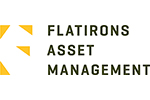Sponsored: The Case for Self-Storage in Secondary and Tertiary Markets

By: Scott Smith, CEO, Flatirons Asset Management
As one of the fastest growing sectors in the U.S. economy, self-storage continues to demonstrate outperformance vs. other property sectors. With demand drivers that occur in all market conditions – like family changes, downsizing, military deployment and going to college – self-storage is historically recession resilient, deemed as “almost counter-cyclical, in that it does even better during economic downturns.” The strong performance and fundamentals of self-storage have increased investor interest in the sector.
Strong Self-Storage Demand Beyond Primary Markets
With the heightened outmigration from densely populated cities fueled by the pandemic, continued relocation and hybrid work models, renter demand for self-storage has increased in more affordable and less densely populated cities, pushing demand beyond primary markets, like major metropolitan areas.
As more people move to smaller towns and cities, they may not have the extra space they need to store their belongings despite owning a potentially larger home in a smaller town. Residents of medium-sized homes (1,500-2,499 square feet and 2,500-3,500 square feet) make up the largest group of self-storage users. This creates a market opportunity in secondary and tertiary markets for self-storage operators.
Secondary and Tertiary Markets Provide More Renter Choice
Limited land availability and high land prices in primary markets often result in multi-story self-storage units and mini-storage units instead of the more traditional drive-up self-storage facilities. These types of units typically offer smaller rental spaces that may not sufficiently meet potential renter needs. With locations in densely populated areas, self-storage units in primary markets can also be challenging for renters to access their units during peak traffic times.
With less expensive and more developable land, secondary and tertiary market facilities offer expanded choices in unit sizes to accommodate varying types of renters, including individuals, families and businesses. Additionally, they may offer more flexibility in terms of lease agreements, allowing for varying rental periods. A laddered lease term approach also helps self-storage operators in secondary and tertiary markets maximize rents by continually adjusting them to market levels as lease terms expire.
Undermanaged Assets in Secondary and Tertiary Markets Present Opportunity
While many of the self-storage units in primary markets are newly developed, most self-storage properties in secondary and tertiary markets are older generation products. In these non-primary markets, self-storage facilities are typically 15-25 years old and managed by individual mom-and-pop operators. While these assets were built in an era less focused on the aesthetics of the buildings, they offer an opportunity for significant operational improvements that have the potential to bolster performance.
Picture a self-storage asset in a smaller market that has been run by a mom-and-pop operator who has managed the books by means of a three-ring binder, carbon copy rental agreements and no website. Enter a skilled self-storage operator – like Red Dot Storage (Flatirons Asset Management’s property manager) – that has a track record in data-driven operations and an automated self-rental experience. Despite increased institutional investor interest in self-storage, improving operations at self-storage assets remains a significant opportunity.
Some capital improvements may be made to the property, but the bulk of the operational efficiencies gained are by automating the rental experience, reducing the time it takes to rent a self-storage unit by 80% from starting the application to storing items, and reducing the need – and expense – of on-site full-time employees.
Data-Driven, Automated Self-Rental Operational Performance
Red Dot’s data-centric approach allows for in-depth analysis of market and facility selection to focus on assets with the potential for improved in-place rents, same-store gross revenue and same-store net operating income (NOI).
Founded in 2014, Red Dot has managed the secondary and tertiary market self-storage facilities owned by Flatirons Asset Management for many years. Despite this longevity, Red Dot’s focus is to continually enhance operational performance, and in the first quarter of 2023 they grew rents and increased gross revenue and NOI.
Selected based on proprietary smart data models that process more than 700,000 data points to identify properties and markets with the greatest potential to benefit from automated operations, the assets owned by Flatirons Asset Management – and operated by Red Dot – have historically been highly stable, but future performance is not guaranteed.
How Self-Storage in Secondary and Tertiary Markets Contributes to Investment Portfolios
Investing in self-storage facilities in secondary and tertiary markets can provide diversification benefits to real estate investors. These markets have different economic drivers and demand drivers compared to primary markets, which can help mitigate risk and potentially improve portfolio performance.
Flatirons Asset Management’s assets seek to offer the upside potential inherent in the self-storage sector, paired with the opportunity to acquire facilities and improve operations through the time-tested Red Dot model. Additionally, capitalizing on the historic resiliency of the self-storage sector, the assets may offer the potential downside protection of the self-storage asset class, bolstered by the operational insights that come from market familiarity as well as asset ownership and operating tenure.
About Flatirons Asset Management
Flatirons Asset Management was founded in 2019 as part of the Crosstimbers Capital Group to provide individuals with investment opportunities in the self-storage asset class through tax-advantaged real estate offerings. Flatirons seeks to provide reliable income, downside protection and upside potential through skillful management and strategic exits.
For further information, contact Orchard Securities at 801.316.4301 or marketing@orcharddistribution.com.
Flatirons Asset Management is a sponsor of The DI Wire, and this article was published as part of their standard directory sponsorship package.
This is neither an offer to sell nor a solicitation of an offer to buy the securities described herein. Only the Private Placement Memorandum makes such an offer. This literature must be read in conjunction with the Private Placement Memorandum to fully understand all of the implications and risks of the offering of securities to which it relates. Please read the Private Placement Memorandum in its entirety before investing for complete information and to learn more about the risks associated with this offering.
Securities are offered through Orchard Securities, LLC. Member FINRA/SIPC. Orchard Securities, LLC and Flatirons Asset Management are not affiliated.
Flatirons Asset Management is a sponsor of The DI Wire, and the article was published as part of their standard directory sponsorship package.
For more Flatirons Asset Management news, please visit their directory page.


